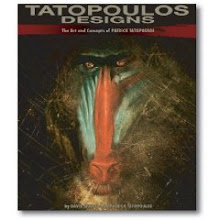 From Greenwich Village to Taos: Primitivism and Place at Mabel Dodge Luhan’s. By Flannery Burke. Lawrence: University of Kansas Press, May 2008. Cloth: ISBN 978-0-7006-1579-7, $34.95. 232 pages.
From Greenwich Village to Taos: Primitivism and Place at Mabel Dodge Luhan’s. By Flannery Burke. Lawrence: University of Kansas Press, May 2008. Cloth: ISBN 978-0-7006-1579-7, $34.95. 232 pages.Review by Hilary Iris Lowe, University of Kansas
Flannery Burke’s From Greenwich Village to Taos examines the circle of artists, writers, and political agitators who interacted with Mabel Dodge Luhan in Taos, New Mexico. In addition to those who Mabel Dodge (as Burke chooses to call her) lured to Taos from Greenwich Village, Harlem, and Italy, Burke investigates the New Mexicans whom Dodge encountered when she left New York. With chapters that focus on several famous characters who either visit or play a role in creating Dodge’s Taos salon, Burke recreates the complicated world that Dodge found and loved in Taos. Burke explores how these individuals negotiated the central ideals of Modernism while devoting themselves to their vision of New Mexico as a place that held spiritual, creative, and political opportunities. Burke’s most important contribution to the study of these famous men and women—all but one have been studied in detail before—is that she considers for the first time how they functioned on a day-to-day basis in New Mexico. She delves into how the “outsiders” allied themselves with local causes and populations. Most significantly, she uncovers, through local primary sources, the complicated ways that local Hispano and Taos Pueblo populations responded to and managed Dodge and her circle.
With individual chapters on Dodge, John Collier, Nina Otero-Warren, Carl Van Vechten, Tony Lujan, Mary Austin, D.H. Lawrence, and Georgia O’Keeffe, it is hardly possible to summarize effectively the contents of Burke’s study. This breadth is both an asset and a shortcoming for the text. Several subjects deserve more time and a couple might have been left out to create a tighter focus for the book. The study is strongest when Burke concentrates on those individuals who were closest to Dodge or who were most interested in the relationship between modernism and the celebration of primitivism. Her chapter on the correlation between Mabel Dodge’s patronage of Pueblo artists and Carl Van Vechten’s patronage of African American artists (such as Langston Hughes) highlights elements of Dodge and Van Vechten’s work in comparison. Burke carefully reconstructs their conversations about the artistic communities they patronized. Each argued that the communities that interested them were the most authentically American, because as Burke puts it, they “were obsessed with authenticity” (7). This resoundingly competitive strain of advocacy allows Burke to define and explore the primitivism to which Van Vechten and Dodge were committed. Unfortunately, much of Burke’s exploration of these ideas happens in footnotes. Dodge’s advocacy for Taos Pueblo was limited by the idealized primitive egalitarian life she imagines there. Her patronage verged on historic preservation; for example, she campaigned to keep electricity and modern conveniences out of the pueblo, despite bringing them to her own estate on former Taos Pueblo land.
Burke’s chapter on Tony Lujan is also groundbreaking. Because Lujan “was functionally illiterate, “his important role in the commercial development of Taos as an artists’ colony has been largely overlooked by historians” (115). Scholars have long perceived Lujan as merely Dodge’s husband rather than an active agent in her circle. Burke explores his history in a chapter that carefully parses what readers may know about Lujan from Dodge’s letters on his behalf, from accounts of his nights out with Van Vechten in Harlem, and importantly from a few interviews with family members. Because Lujan often led tours for Dodge’s visitors, including John and Lucy Collier, D.H. Lawrence, and Georgia O’Keeffe, he was the first official guide through which they came to see New Mexico. His vision of Taos and the surrounding area profoundly influenced how these “outsiders” came to understand and develop their own desert aesthetic. Through interviews with Lujan’s nephews and niece, readers will be able to see for the first time an account of Lujan as part of a larger family, and as a local employer, landowner, and businessman. It also becomes clearer how his complicated relationship with Dodge separated him from Taos Pueblo and, at the same time, gave him power over the individuals in that community whom he chose to employ at the pair’s estate (122).
Strangely, for a book about place, Burke makes very little of Taos as a tangible place and only barely touches on the homes that Dodge, Austin, and O’Keeffe, in particular, made there. Individual homes are rarely mentioned; if readers are interested, for instance, in the estate that Lujan and Dodge built, they will find a much better account of it in Lois Rudnick’s biography of Dodge and her Utopian Vistas: Mabel Dodge Luhan’s House and the American Counter Culture. Burke does not focus on the physical places of New Mexico. Her exploration of Dodge’s place is largely limited to place as a political and social construction. She carefully articulates the ways that Dodge, Collier, Nina Otero-Warren, and Austin locate themselves within the complicated “tri-ethnic trap” of Anglo, Indian, and Hispano Taos and Santa Fe. Burke also carefully explores the complex and exclusionary world that white women made for themselves in New Mexico when they decided to call it “home” (135-144).
From Greenwich Village to Taos will be most useful to scholars interested in the study of American Modernism. They will find Burke’s work an important counter-narrative about where and how ideas about modernism were worked out. Taos—and its very particular cultural history—was an important and interactive laboratory for modern artists, thinkers, and writers.


No comments:
Post a Comment